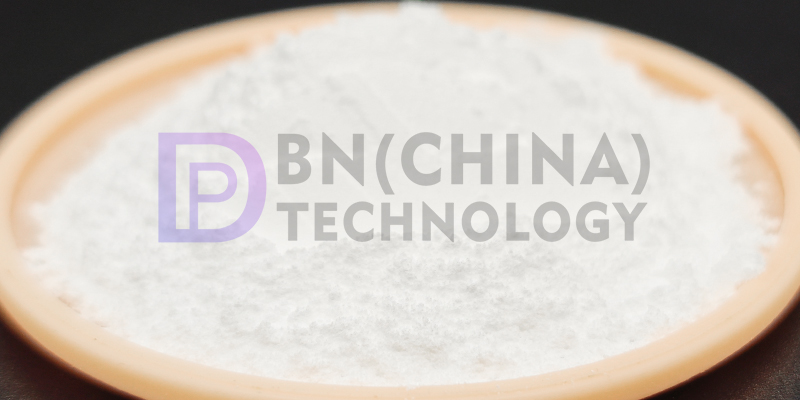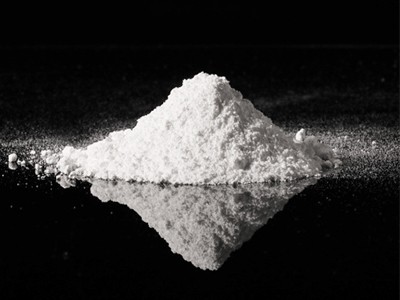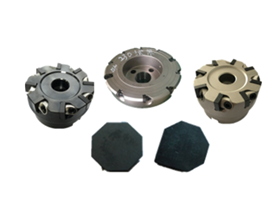With the rapid development of new energy vehicles and portable electronic devices, the power density of lithium-ion batteries continues to rise. However, if the heat generated by battery operation is not effectively channeled, it will easily lead to serious safety hazards such as overheating, performance degradation and even thermal runaway. Traditional heat dissipation materials are often unable to meet the high thermal conductivity and strong electrical insulation at the same time. At this point, hexagonal boron nitride (h-BN) stands out as a key candidate for next-generation battery thermal management materials due to its unique physicochemical properties.

Hexagonal boron nitride has a layered structure similar to graphene and is often referred to as “white graphene”. Its core advantage is that it combines a number of excellent properties. First, it has excellent thermal conductivity, with the theoretical thermal conductivity of a single layer of h-BN reaching 400 W/(m-K), which is comparable to that of metallic copper and much higher than that of conventional polymer materials (typically less than 0.5 W/(m-K)). This is due to the fact that the layers are connected by weak van der Waals forces, phonon scattering is low, and heat can be transferred efficiently in the planar direction. Secondly, it possesses excellent electrical insulation. As a wide bandgap semiconductor (~6 eV), h-BN has extremely high resistivity and breakdown field strength (over 800 kV/mm), and a mere 1 mm-thick h-BN sheet can withstand over 10,000 volts, making it an ideal insulating barrier. In addition, it is lightweight (density of about 2.1 g/cm³), chemically inert, temperature resistant (stable in air up to 900°C), oxidation resistant, and compatible with electrolytes.
These properties of hexagonal boron nitride translate into significant advantages in battery heat dissipation applications. It enables efficient construction of thermally conductive channels. For example, the incorporation of h-BN nanosheets as fillers into polymer matrix (e.g., silica, epoxy, PI) can substantially increase the in-plane thermal conductivity of composites. Through high filler ratio or directional alignment technology, the thermal conductivity of h-BN/polymer composites can reach 10-30 W/(m-K) or even higher, which can effectively and quickly export the heat generated inside the battery monomer or module to the external heat dissipation structure. It can also be applied as a coating directly to the surface of the cell or pole piece to establish an efficient heat transfer path and reduce interfacial thermal resistance. At the same time, h-BN is a reliable insulation guardian of the battery system. Its excellent electrical insulation performance fundamentally eliminates the risk of short-circuiting inside the battery due to the conductivity of the heat dissipation material itself, which is particularly important for high-voltage battery packs. Compared to traditional insulating and thermally conductive silicone mats with fillers such as alumina, h-BN composites usually provide better thermal conductivity (i.e., higher thermal management coefficient H) for the same level of insulation, which achieves both safety and heat dissipation performance. In addition, the low density of h-BN helps reduce the overall weight of the battery pack, thereby increasing energy density. Its excellent thermal stability and chemical inertness ensures the long-term reliability of the heat dissipation material under long-term charging and discharging cycles and various complex working conditions, effectively avoiding the problem of material aging and failure.
Hexagonal boron nitride is very flexible and versatile in its application forms, and can be adapted to different battery heat dissipation scenarios. It can be filled into silicone rubber and other substrates to make flexible thermally conductive gaskets or gels, as a thermally conductive interface material (TIM) to fill in the gap between the battery and the cooling plate or shell, significantly reducing the contact thermal resistance. It can also be used to make thermally conductive plastic or composite materials, molded into structural parts such as battery module brackets and casings, so as to make them both structural support and heat dissipation functions. h-BN heat dissipation coatings can be directly coated on the inside of the battery electrode, collector, or casing, to enhance the efficiency of local heat dissipation. It can also be made into highly oriented independent h-BN films by scraping and hot pressing, or composite with graphene to form a thermal conductive film, providing ultra-high in-plane thermal conductivity.
With its unique and balanced properties such as high thermal conductivity, strong insulation, light weight and stability, hexagonal boron nitride provides a highly promising and ideal solution to the core contradiction in the thermal management of Li-ion batteries - efficient heat dissipation and absolute electrical insulation. With the continuous breakthroughs in material preparation and composite technology as well as the gradual optimization of cost, hexagonal boron nitride will certainly play an increasingly critical role in building a safer, more efficient and more reliable next-generation battery system, escorting battery safety in the new energy era and promoting electric vehicles and energy storage technology to move towards the goal of higher performance. It is worth mentioning that its excellent insulation performance is especially critical, only 1 mm thick h-BN material can be constructed to withstand tens of thousands of volts of solid barrier for high energy density batteries to provide an invisible safety guarantee.




